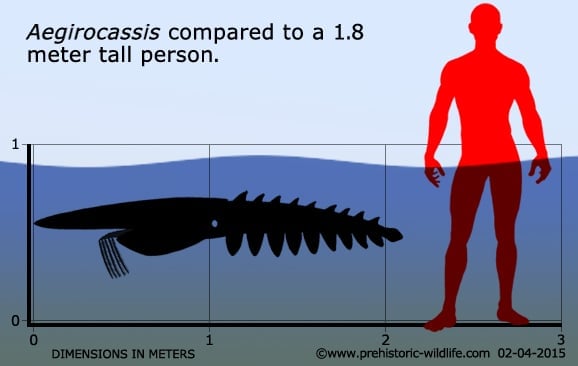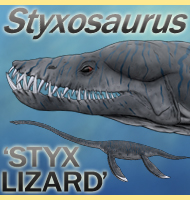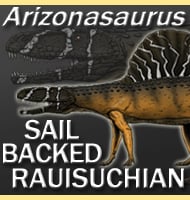In Depth
Out of all the Cambrian era arthropods so far named, Aegirocassis has certainly been one of the most remarkable. Obviously the thing that most people notice about Aegirocassis is the huge size, at just over two meters in length for the largest recorded specimen, Aegirocassis was in 2015 the largest anomalocaridid so far named, as well as amongst the largest arthropods ever discovered.
Far more important than the size however, the three dimensional preservation of some of the Aegirocassis specimens has proven that Aegirocassis had two sets of swimming flaps, and not one as had been previously assumed for other anomalocaridids. Before, it had been assumed that anomalocaridids had ‘lost’ their lower sets in favour of one for easier swimming. Aegirocassis however has proven that the lower set, which originally would have been legs (as in lobopods), were simply adapted into additional swimming flaps. In addition to this comparisons to specimens of earlier named genera such as Peytoia and Hurdia seems to indicate that these other genera also had two sets of flaps and not just one as had been previously assumed. This two branched limb arrangement is something that is seen in modern arthropod types such as shrimps. The authors of the 2015 description of Aegirocassis also noted ribbon like structures believed to have been gills. Sometimes seen in other anomalocaridids, these have in the past assumed to have been fixed to the back, but the authors of Aegirocassis noted that these possible gills attached to the upper row of flaps.
Aegirocassis was one of the later anomalocaridids living in the Ordovician period whereas most other currently known anomalocaridids seem to have been Cambrian. Earlier anomalocaridids are generally still perceived as predators (though some detritivore theories exist). Aegirocassis however is noted as having frontal spines with a very fine mesh of further spine-like appendages that could have filtered planktonic organisms from the water. This likely makes Aegirocassis a planktonic filter feeder, not an active predator. This may also in part explain how Aegirocassis could grow so big, as not only is plankton abundant and nutritious, it requires very little energy expenditure to catch, meaning more calories can be diverted to growth and maintenance of large physical size.
The idea of Aegirocassis as a filter feeding anomalocaridid also goes to show that nature has a habit of repeating itself. Anomalocaridids almost certainly started out as carnivores, with some then growing to truly gigantic size when making the switch to filter feeding. Fish too mostly started out as predators, but some like Leedsichthys which lived much later during the Jurassic attained massive sizes simply by filter feeding. In today’s oceans two of the largest sharks, the whale shark (Rhincodon typus) and basking shark (Cetorhinus maximus) are both filter feeders. Whales too began their early evolutionary history as predators, but today the largest whales alive are all filter feeders. What Aegirocassis shows us is that this pattern of growing giant by switching to filter feeding is one that goes back at least as far as the Ordovician period and with arthropods. Earlier in 2010 another anomalocaridid named Tamisiocaris was described, and this genus is also now speculated to have been a filter feeder.
The name Aegirocassis means ‘Aegir’s helmet’. In Norse mythology Aegir was a giant who lived in the sea, and was chosen for the name in reference to the large size of Aegirocassis. The helmet part is a reference to the size and structure of the head carapace of Aegirocassis. The type species name is in honour of Mohamed Ben Moula who discovered the first specimens.
Further Reading
- Anomalocaridid trunk limb homology revealed by a giant filter-feeder with paired flaps. - Nature. - Peter Van Roy, Allison C. Daley & Derek E. G. Briggs - 2015.










